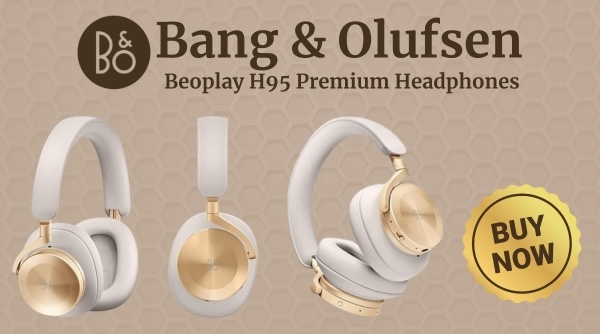Headphone Buyer’s Guide: How to Choose the Perfect Pair
Over the last two decades, headphones have grown in popularity, shaping the way we experience music, podcasts, movies, and even calls. The right pair can enhance sound quality, provide comfort for extended listening sessions, and even offer features like noise cancellation to create the best, immersive experience possible.
But, with so many options available, choosing the right set can feel overwhelming. Should you go for wired or wireless? In-ear, on-ear, or over-ear? Noise-canceling or standard? Choices, choices.
No worries, because this guide breaks down the essential factors to consider, from headphone types to sound quality and special features, so you can make an informed decision and invest in a pair that best suits your needs.

Understanding the Different Types of Headphones
Headphones come in three primary designs: in-ear, on-ear, and over-ear. Each type has its strengths and limitations, and the right choice depends on your listening habits and lifestyle.
In-ear headphones, also known as earbuds, are compact and lightweight, making them perfect for commuting, exercising, or carrying in a pocket. They sit inside the ear canal, creating a seal that helps isolate sound, but the quality can vary depending on the fit and design.
Some high-end earbuds offer excellent clarity and bass response, but generally, their smaller size limits the depth of sound compared to larger over-ear headphones.
On-ear headphones rest on the outer ear rather than enclosing it. They strike a balance between portability and sound quality, often delivering better depth and clarity than earbuds while remaining more compact than over-ear models. But, they typically don’t provide the same level of noise isolation, and prolonged use can sometimes lead to discomfort.
Over-ear headphones, the largest of the three, completely enclose the ears. This design allows for superior sound quality, deep bass, and excellent noise isolation, making them ideal for immersive listening.
While they offer exceptional audio fidelity, they can be bulky and less portable than other types. If comfort and sound quality are top priorities, over-ear models are often the best choice.
When choosing a type, consider where and how you’ll use your headphones. If you frequently travel or exercise, lightweight in-ear models might be best. If audio fidelity is your main concern, over-ear headphones provide the richest sound experience.

Wired vs. Wireless Headphones: Which is Better?
The choice between wired and wireless headphones largely depends on convenience versus sound quality.
Wired headphones are preferred by audiophiles and professionals because they offer an uninterrupted signal without the risk of interference or compression. And as they don’t require charging, they’re always ready to use.
They’re also known for delivering a purer sound because they don’t rely on Bluetooth, which can sometimes compress audio files and reduce quality. However, the trade-off is mobility—being tethered to a device can be restrictive.
Wireless headphones, on the other hand, provide freedom of movement, making them ideal for workouts, commuting, or general convenience. They connect via Bluetooth, which has improved significantly in recent years, reducing audio lag and enhancing overall sound quality, but most won’t match the audio fidelity of wired headphones.
The main drawback is that they need to be charged. So, battery life is a crucial factor, with some models offering 20 to 40 hours of playtime, while others may need more frequent charging.
If you prioritize flexibility and convenience, wireless is the way to go. If sound quality and reliability are your top concerns, wired models are still the gold standard.
Sound Quality: What Matters Most?
Sound quality is subjective, and what sounds “good” to one person may not be ideal for another. However, certain key factors determine audio performance.
One important specification is frequency response, which refers to the range of sounds the headphones can reproduce. Human hearing typically spans from 20 Hz (deep bass) to 20,000 Hz (high treble), and a wider frequency response means more detailed sound reproduction. If you enjoy deep bass, look for models with strong low-frequency extension.

Impedance is another crucial factor. It measures electrical resistance, with lower-impedance headphones (below 25 ohms) being easier to drive with portable devices like smartphones. Higher-impedance headphones require more power and are best paired with dedicated amplifiers to reach their full potential.
Sensitivity determines how loud headphones can get at a given power level. Measured in decibels per milliwatt (dB/mW), most headphones range around 100-110 dB/mW. If you prefer high-volume listening (not advised), a model with higher sensitivity is recommended.
The driver size and type also impact sound. Larger drivers tend to produce better bass, while high-quality balanced armature drivers, often found in premium earbuds, offer precise sound reproduction. The best way to evaluate sound quality is by personally testing them—what sounds rich and balanced to one person may not be ideal for another.
Noise Isolation vs. Active Noise Cancelling
If you frequently listen to audio in noisy environments, noise-canceling technology can significantly enhance your experience. There are two approaches: passive noise isolation and active noise cancellation (ANC).
Noise-isolating headphones create a physical barrier that blocks external sound, usually through snug-fitting ear cups or ear tips. This method is effective in moderately noisy settings but doesn’t eliminate sound entirely.
Active noise-canceling (ANC) headphones take noise reduction a step further by using built-in microphones to detect ambient sounds and generate an opposite sound wave to cancel them out.
ANC is particularly useful on airplanes, in busy offices, or in urban environments where background noise is constant. Beware though, ANC models do offer superior noise reduction, but they tend to be more expensive and use battery power to function.
Comfort and Fit: The Often Overlooked Factor
Even the best-sounding headphones can be a disappointment if they’re uncomfortable to wear. Comfort depends on ear pad materials, headband adjustability, and overall weight.
Memory foam ear cushions provide a snug fit and improve noise isolation, while lighter headphones reduce strain during extended use. If you wear glasses, look for models with softer ear cups to prevent discomfort.
Trying headphones on before purchasing is ideal, but if you’re buying headphones online, check reviews for long-term comfort insights.

Additional Features to Consider
Beyond core audio performance, there are other features that might enhance your listening experience.
Battery life is critical for wireless headphones, with premium models offering up to 40+ hours of playback on a single charge. Fast-charging capabilities can be a lifesaver, too, if you’re often on the move.
Water resistance is essential if you plan to use headphones while working out or in unpredictable weather conditions. Look for models with an IPX rating, which indicates protection against water and sweat. For example, IPX7-rated headphones can withstand immersion in water for short periods.
Some models include smart features like voice assistant integration, customizable EQ settings, and touch controls for convenience. And although these aren’t essential, they can enhance usability.
Finding the Right Balance Between Price and Performance
Headphones range in price from budget-friendly options under $50 to high-end audiophile models costing thousands of dollars. While price often reflects quality, it doesn’t guarantee the best listening experience for everyone. Some mid-range models outperform expensive ones in terms of comfort, sound balance, and durability.
Before purchasing, think what features matter most to you and set a realistic budget. If you prioritize sound quality, invest in well-reviewed audio-focused brands. If convenience is key, wireless and noise-canceling options may be worth the extra cost. Research, read reviews, and, if possible, test different models before making a decision.
Headphone Buyer’s Guide: Getting It Right First Time
When choosing the right headphones it’s about finding the perfect match for your lifestyle, listening preferences, and comfort needs. With so many options available, taking the time to research and understand key factors like sound quality, noise cancellation, wired vs. wireless connectivity, and overall fit will ensure you make the right choice from the start.
A well-informed decision means you won’t have to replace them soon after buying. This headphone buyer’s guide has covered everything from comfort to audio features to battery life, helping you balance convenience, performance, and budget.
Whether you’re an audiophile demanding for the best sound, a frequent traveler needing effective noise cancellation, or someone who simply wants a reliable and comfortable pair, there are exceptional headphones on the market for everyone.
Check out more from our Soundrating Blog…
Cut the Cord: A Beginner’s Guide to Wireless Headphones

I am a passionate and skilled car audio enthusiast with 15 years of experience in the industry. My journey started when I replaced my first set of factory car speakers, sparking a deep love for high-quality sound. Since then, I have worked as a representative for renowned brands like Kenwood and Alpine.
With a background in both retail and distribution, I have developed a comprehensive understanding of the car audio market. Currently a certified (MECP) installer in the Mobile Electronics industry, my expertise lies in delivering top-notch audio installations. My knowledge, coupled with my genuine passion, makes me the go-to professional for all car audio needs.
